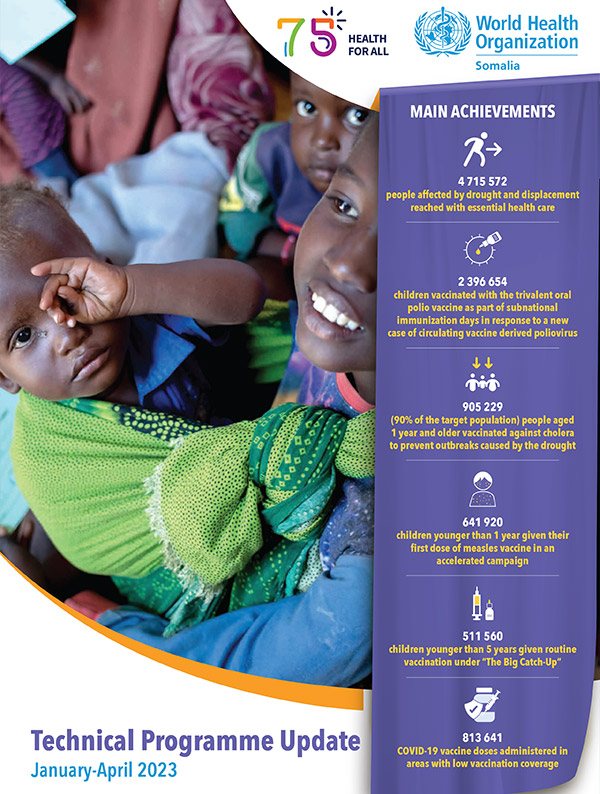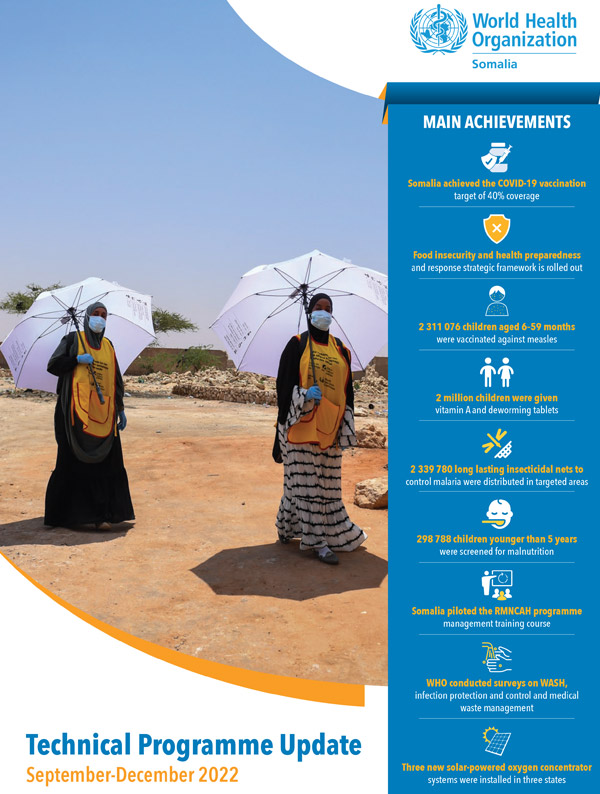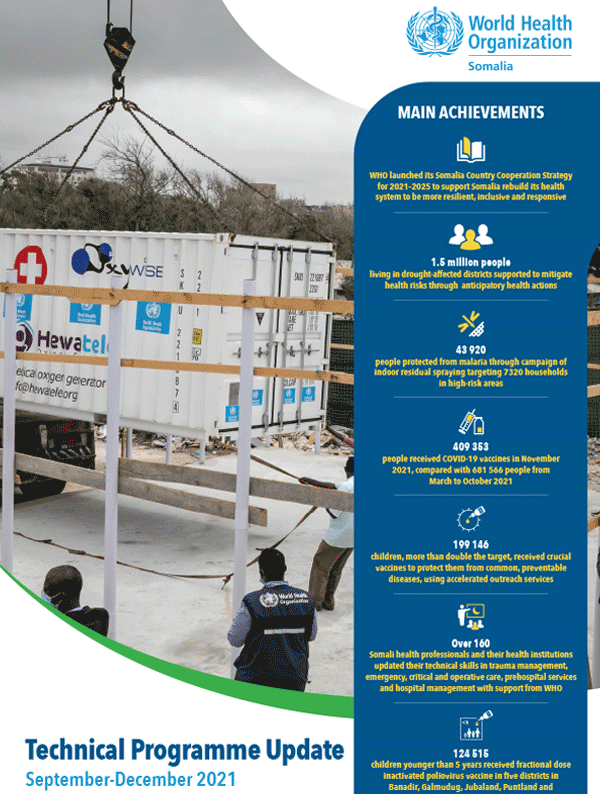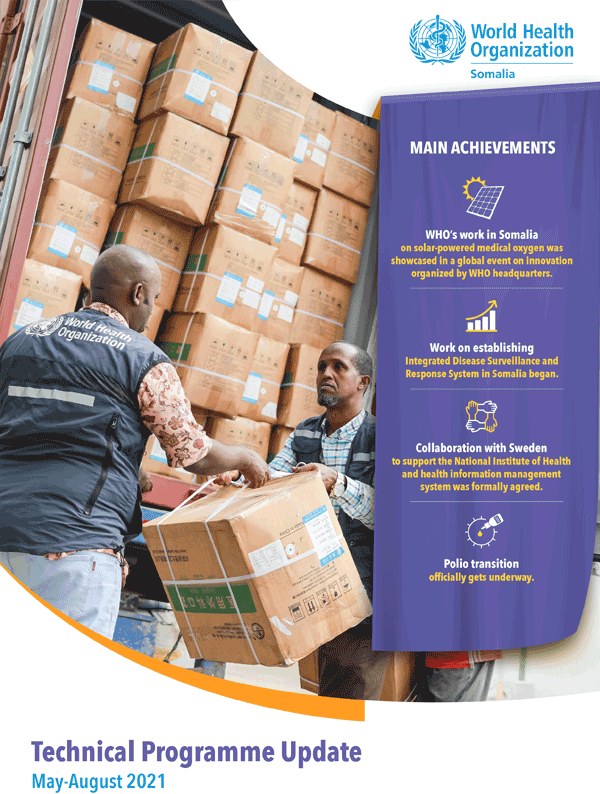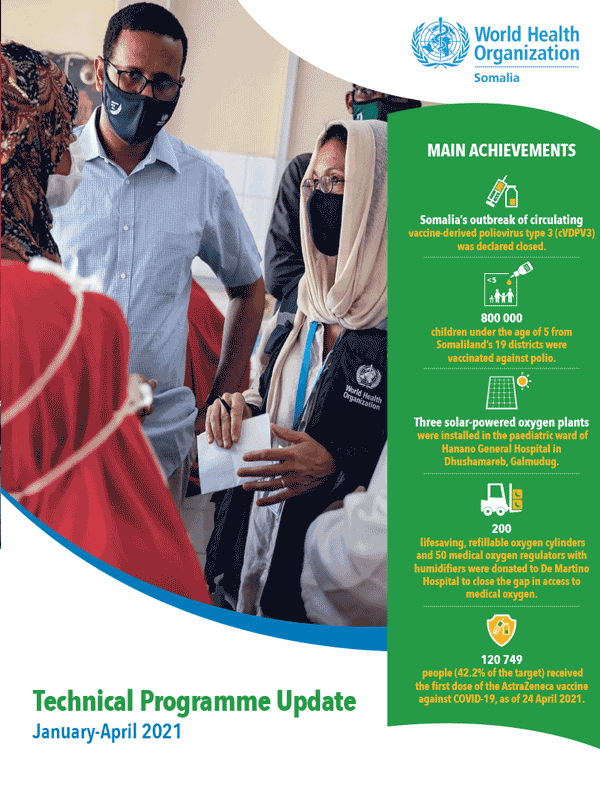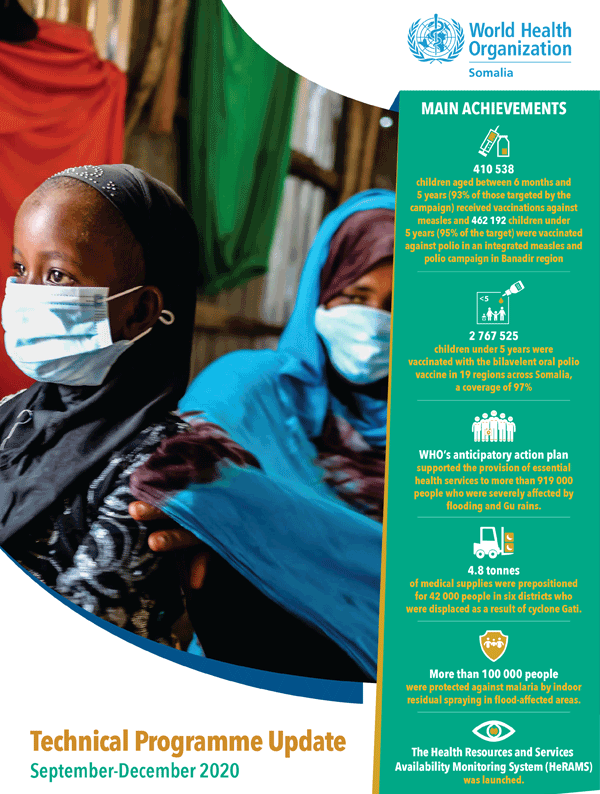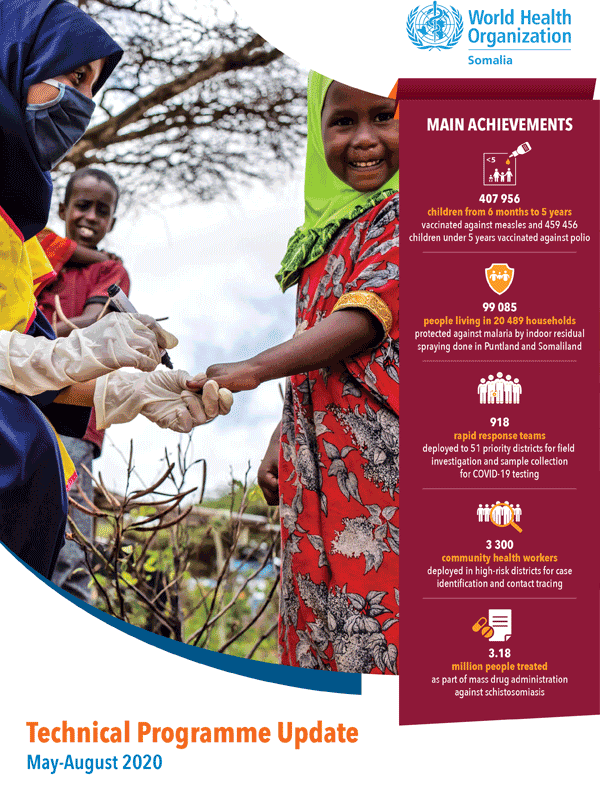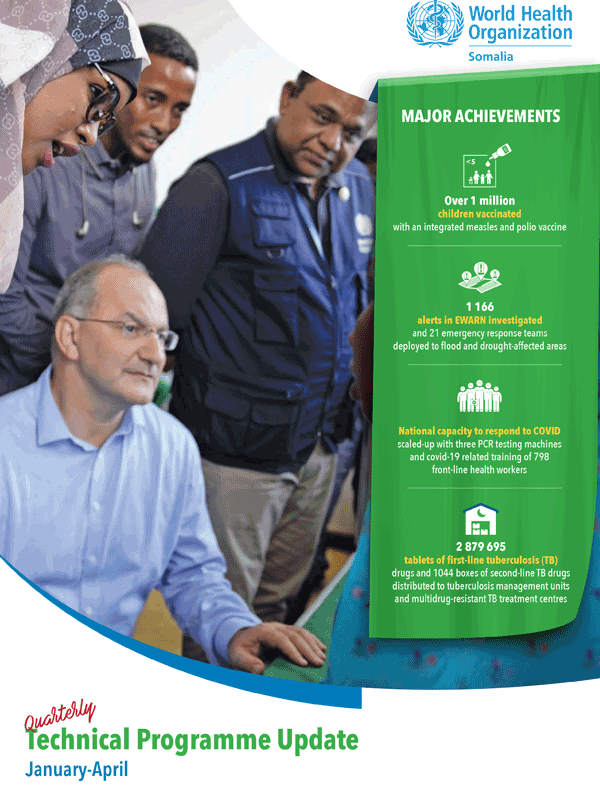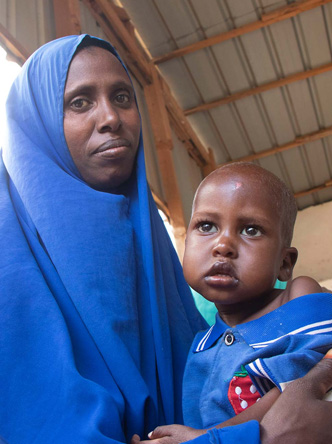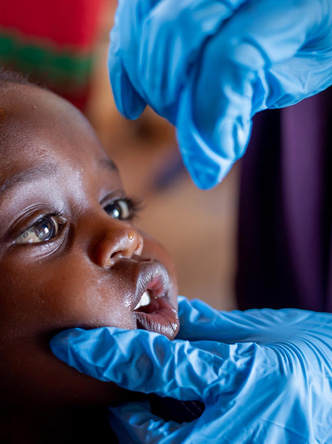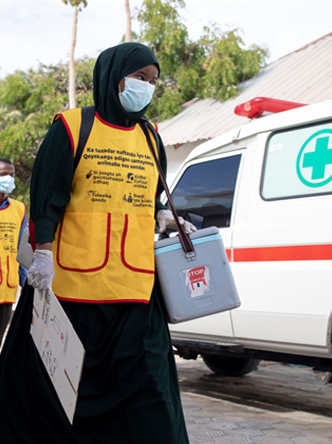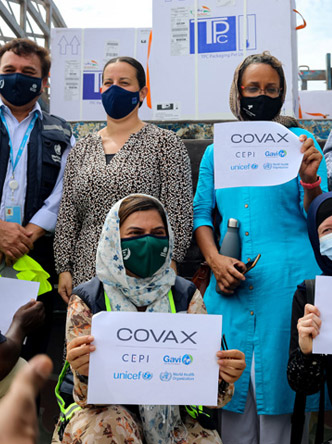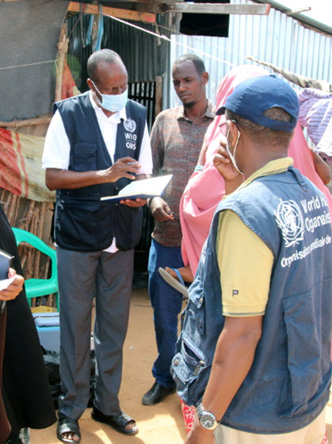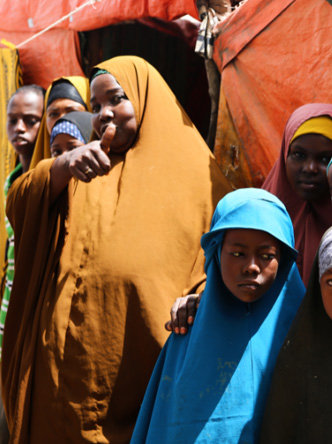Sélectionnez votre langue
WHO’s work in pictures: bridging health gaps
This photo essays shows the work of WHO in Somalia and its health partners during 2019. It highlights achievements in important priority areas to improve health, prevent disease and save lives. WHO is working to bridge existing gaps in service delivery and health care access and promote evidence-informed interventions and strategies for better health for everyone, everywhere. The work of WHO in the country continues to be supported by a number of key donors and partners and their contribution is greatly appreciated.
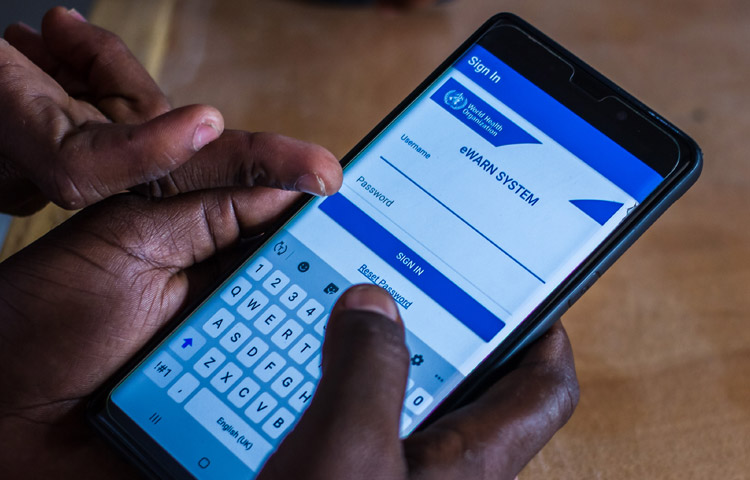
Early Warning Alert and Response Network: keeping the country safe
EWARN is a real-time web-based electronic surveillance system for early detection of, and response to, threats of epidemics. By 2019, an estimated 6.5 million people and 535 out of 1075 health facilities were covered by the EWARN system. A record 4 789 832 consultations were reported in 2019. In 2019, the system triggered over 18 000 outbreak alerts, of which 883 were verified through field investigation by WHO and the health authorities. A number of cases of cholera, measles and chikungunya were confirmed by laboratory tests as the system picked up unusual trends in cases early on triggering rapid field investigation. In the absence of any routine disease surveillance system in the country, EWARN continues to keep the country safe by detecting early and responding to epidemic threats quickly.
Immunization services: making every child count
WHO supports national health authorities make every child count by reaching out to every child with life-saving vaccines. In 2019, through routine immunization services, 462 050 children under 1 year of age (out of 602 195 or 77%) completed the three doses of pentavalent vaccine, while 430 275 (71%) received the measles, mumps, rubella vaccine. Despite a steady increase in routine immunization coverage over the past year, between 140 000 and 170 000 children missed out on the life-saving vaccines during 2019. Currently, 628 of an estimated 1075 health facilities provide routine immunization services but immunization coverage is still low in some hard-to-reach areas. Making every child count is the underlying goal for increasing routine immunization coverage in Somalia. In the future other health facilities in districts currently not covered or supported by the routine Expanded Programme on Immunization (EPI) will be included and outreach sessions organized.
HIV/AIDS: ensuring universal access to prevention, treatment and care
Since 2014, Somalia has been classified as having a low-level HIV epidemic. WHO’s technical work with health authorities for HIV/AIDS control has focused on overcoming the stigma and low awareness of the infection, which has resulted in low rates of detection. To increase testing and detection, HIV testing kits were distributed to 89 out of 94 active tuberculosis (TB) treatment facilities in 2019. As a result, 91% of people with TB were also tested for HIV in 2019, with a 0.89% positivity rate. Furthermore, 73% of patients enrolled in HIV treatment programmes also have been tested for TB, and 80% of people co-infected with Mycobacterium tuberculosis and HIV were enrolled in an antiretroviral therapy (ART) programme. By the end of 2019, 3491 people living with HIV/AIDS were alive and receiving ART across the country. An additional 394 patients started to receive ART in 2019. This number is still low and represents only an estimated 36% of the people living with HIV/AIDS in the country. WHO will continue to tackle the epidemic until all those living with HIV/AIDS in the country have guaranteed access to treatment and care.
Ending tuberculosis: scaling up the fight for universal access
In 2019, WHO supported the health authorities to accelerate efforts to end TB and reach all affected people with prevention and care. As a result, 16 907 new TB cases were enrolled in treatment. The number of new laboratory-confirmed infections in 2019 was 7892. Of these cases, 335 had multidrug-resistant TB (MDR-TB). A total of 108 660 presumptive cases of TB were tested in 93 TB laboratories across the country. The estimated incidence of TB infection in 2019 was 262 cases per 100 000 population. Currently, only 43% of people with TB in the country have access to treatment. A strategy to increase universal access to treatment and care has been supported by enhancing TB diagnostic facilities, developing standard operating procedures for diagnosis and management of active TB cases, and reviewing, updating and developing the TB national strategic plan, and the treatment guidelines for latent TB infection and MDR-TB cases. WHO will continue to work with the health authorities in the country to scale up universal access to high-quality diagnosis, treatment and care services for TB through policies and strategies that can bring an end to this disease.
Ending cholera: using effective intervention strategies
Somalia remains a cholera-endemic country and has had recurrent cholera outbreaks over the past decade resulting in many deaths. WHO’s support to end cholera in the country included a risk assessment done jointly with the health authorities in 2019. As a result, 642 913 people at risk of cholera aged 1 year and more in six districts were targeted for a mass preventive campaign using the two-dose oral cholera vaccine (OCV). The first phase of the campaign was launched by the health authorities with technical assistance from WHO during 22–28 June 2019 and the second phase was implemented during 3–11 August 2019. The OCV campaign was part of the government’s broader plan to reduce cholera-related deaths by 90% by 2030. A total of 2516 health workers including 629 vaccination teams were deployed for this campaign. A total 621 875 people (96.7%) received the first dose and 616 726 (95.9%) received the second dose resulting in an overall administrative coverage of over 96%. The strategy has worked as compared with 2017 and 2018, cholera-associated deaths fell by over 200% in 2019 compared to preceding year through use of the OCV.
Eradicating polio: reaching every last child
Somalia has been free of wild polio virus since 2014. However, since 2017, the country has faced concurrent outbreaks of circulating vaccine-derived polio virus (cVDPV) types 2 and 3. Since the onset of this ongoing outbreak, 15 children with polio have been detected with cVDPV2 and cVDPV3; three of the cases of cVDPV2 were reported in 2019. Keeping the country free of wild polio virus and ending the outbreaks of cVDPV2 and cVDPV3 are the remaining challenge to reach polio eradication. In 2019, an estimated 3 147 843 million children under 5 years were targeted for over seven rounds of oral polio vaccination campaigns to end the ongoing outbreaks and also to maintain the country’s status of being free of wild polio virus. The administrative coverage was between 93% and 98.8%. Surveillance is key to keeping the country polio-free. Despite security concerns, WHO has established four sites in Mogadishu as part of environmental surveillance to monitor circulating poliovirus in sewage samples. In 2019, 75 sewage samples were collected and tested, eight of which were confirmed to contain cVDVP2. The surveillance system also detected 361 cases of acute flaccid paralysis but none of them were positive for polio virus. WHO will continue to work to reach every last child with the polio vaccine until Somalia is free of polio.
Integrated measles and polio campaign: reaching every child
Despite the gains made with immunization campaigns, routine immunization coverage remains low in Somalia. In 2019, there were 4442 suspected cases of measles, of which 283 were laboratory-confirmed. In addition, because of the challenges of reaching hard-to-reach areas, the country is currently experiencing two outbreaks of rare strains of poliovirus, which have affected 15 children so far. During 2019, WHO supported the health authorities to conduct an integrated measles and polio immunization campaign. The campaign focused on children in districts with high concentrations of internally displaced people and nomadic communities in order to reach children missed in routine immunization programmes. The campaign aimed to immunize children living in 71 districts in south and central Somalia – over 1.7 million children under-5 years with the bivalent oral polio vaccine and 1.6 million children between 6 and 59 months with the measles vaccine, deworming tablets and a vitamin A supplement to boost immunity. The first phase of the campaign was implemented by over 17 000 skilled community vaccinators, frontline health workers and social mobilizers moving from door to door. This phase resulted in high coverage for measles (82%) and polio (84%). A total of 20 000 children also received their first dose (zero dose) of the polio vaccine. The second phase of the campaign will be conducted in the first quarter of 2020.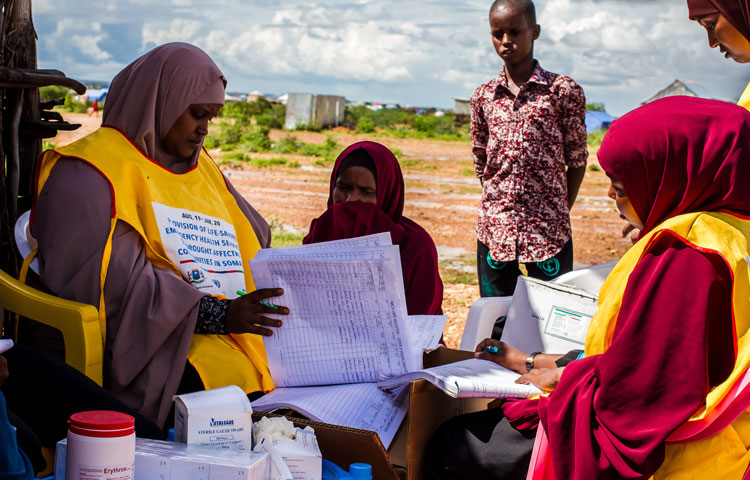
Emergency flood response: protecting the vulnerable
During 2019, parts of Somalia faced flash flooding, which displaced an estimated 370 000 people out of the 539 888 people who were adversely affected. The flash flood left 25 people dead and 47 injured. Because of the risk of epidemics in the flood-affected areas, WHO rapidly scaled up its emergency health response operations in the affected districts to ensure access to health care for the at-risk and affected populations and rapidly put in place life-saving health interventions to prevent epidemics. In the last quarter of 2019, immediately in the after the flood, more than 95 500 flood-affected people were reached with essential health care services through 20 mobile outreach clinics supported by WHO. In addition, WHO also supported the establishment of 10 rapid response teams. Together with the local health authorities, these rapid response teams investigated over 250 outbreak alerts reported from the flood-affected areas. WHO also supplied 127 tons of emergency medical supplies to the local health authorities, valued at US$ 715 027, which were used to help over 117 000 people seeking health care. Small pockets of outbreaks from measles, malaria, cholera and chikungunya were also reported from the flood-affected areas and these were quickly contained. Such rapid and intensified health interventions not only saved the lives of vulnerable populations, they also prevented deaths from diseases that are associated with flooding.
Nutrition: saving the lives of malnourished children
An estimated 138 000 children between 6 and 59 months had severe acute malnutrition in Somalia during 2019, of whom 7% had medical complications and were at high risk of dying from malnutrition-related causes. WHO supported case management of these severely malnourished children with medical complications through training of health care workers and provision of appropriate treatment supplies to 53 stabilization centres. A record number of 18 379 severely malnourished children with medical complications under 5 years were admitted to these stabilization centres during 2019. Most of these children (16 637 or 90.5%) completely recovered and were discharged; 401 children, however, died. In order to achieve a high recovery rate, WHO supported training of 116 health care workers in 37 stabilization centres and distributed supplies to 12 centres. These supplies were sufficient to treat 1250 cases of severe acute malnutrition with medical complications for 3 months. Despite shortages of qualified and trained health care workers to treat severely malnourished children, too few treatment centres and the difficulties for malnourished children living in hard-to-reach areas to access treatment and care, WHO’s support has been key to saving the lives of over 92% of children who were admitted to the stabilization centres with life-threatening medical complications of malnutrition.
Malaria control and elimination: aiming for a malaria-free status
In 2019, WHO supported the Somali government’s malaria control and elimination programme through distribution of drugs for treatment of severe malaria cases and carried out quality-control supervision at health facilities by cross-checking laboratory performance and the availability of malaria-related supplies. It also supported training on malaria microscopy, malaria case management and entomological surveillance and monitored therapeutic efficacy. In 2019, 39 341 new malaria cases were treated with artemisinin-based combination therapy (ACT) while 324 226 rapid diagnostic tests were used across the health facilities to detect new infections. In response to increased rainfall and flooding in south and central parts of the country, emergency indoor residual spraying was undertaken to control a surge in malaria cases. Indoor residual spraying covered 33 049 households in 39 villages throughout the year. In addition, community outreach activities were conducted based on WHO’s Test, Treat and Track initiative. An estimated 189 335 people were protected by these control interventions. WHO will continue to provide support to help Somalia transition from control to elimination of malaria and achieve malaria-free status.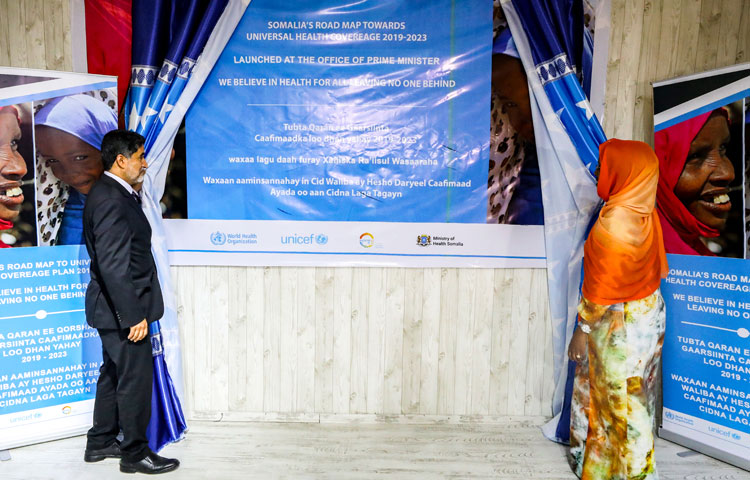
Universal health coverage: making health count
In 2019, the roadmap for universal health coverage (UHC) was launched during the visit of the WHO Regional Director for Eastern Mediterranean. The roadmap provides the strategic framework and medium-term goals for the health sector in the country to work towards UHC. In follow up to this, work has started with health authorities and other partners on revision of the essential package of health services for different levels of health services in the country. At the same time, preparatory work has been completed for an assessment survey of the pharmaceutical sector to understand the current situation for access to essential medicines, which is a key component of UHC. WHO has also supported the health authorities to finalize the reproductive, maternal, newborn and child health strategy for the country. This strategy will guide what health services for mothers and children should be included in the essential package. WHO has also supported the health authorities to roll out Integrated Management of Neonatal and Childhood Illnesses (IMNCI) in several hospitals in the country with a view to integrating health care and nutrition in health facilities. WHO will continue to support the Somali health authorities to achieve UHC and meet the health-related goals of the Sustainable Development Goals, despite the fragile and vulnerable status of the country.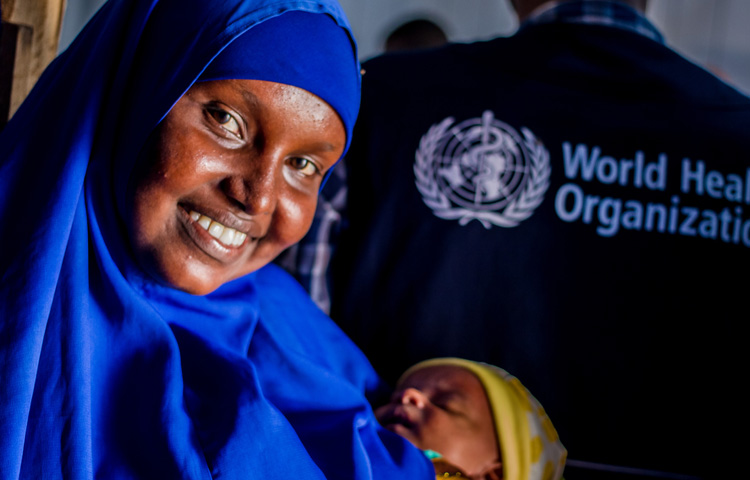
External relations: strengthening collaboration and partnership
In 2019, the WHO country office worked to enhance its relations with and visibility among its donors and partners. Improved visibility of what WHO does to improve the health of the Somali people and how the Organization is saving lives and preventing diseases has raised WHO’s profile. As a result, the country office has secured important contributions in support of the health response to the recent drought and flood emergencies, through the Central Emergency Response Fund, as well as a contribution from the UN Peacebuilding Fund for a mental health project. In addition, WHO has secured contributions from the Italian Agency for Development Cooperation for a hospital rehabilitation project. WHO has also re-established positive contact with Canada, the Department of International Development of the United Kingdom of Great Britain and Northern Ireland, the European Civil Protection and Humanitarian Aid Operations, Germany, Japan, Norway, Sweden, Switzerland, and the Office of the United States Foreign Disaster Assistance at the US Agency for International Development. Furthermore, WHO has negotiated with the King Salman Humanitarian Aid and Relief Center in Saudi Arabia for contributions which will focus on activities in support of UHC and primary health care services. The WHO country office has also established communication with the Islamic Development Bank for future cooperation related to UHC, immunization and EWARN, among others. The WHO office continues in its efforts to expand its donor and partner base in order to help improve health outcomes for all Somalis.2017 Cholera outbreak
After a severe drought sparked a devastating outbreak of cholera last year, Somalis are once again battling the waterborne disease as floods ravage several regions, engulfing shelters and contaminating water supplies.
The 2017 outbreak claimed around 1100 lives with 78 000 reported cases. The World Health Organization (WHO) worked closely with the Somali Ministry of Health, community workers, doctors, nurses and other United Nations agencies and local nongovernmental organizations to implement early warning systems, provide access to clean water, food and shelter, and to launch the biggest oral cholera vaccine campaign the country has ever seen. Lives were saved but the battle goes on in a country that is struggling to rebuild after decades of conflict, perennial droughts, and crippled infrastructure.

Photo credits:Arete, Mogadishu, April 28, 2018













Page 4 sur 5


